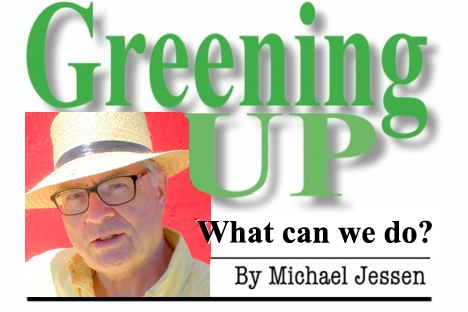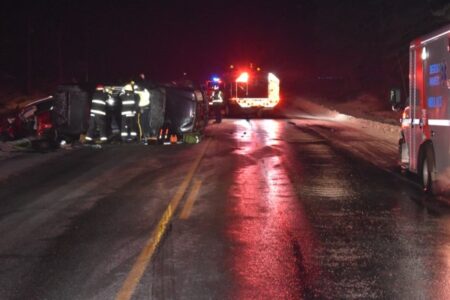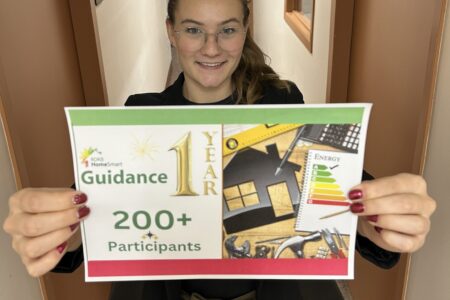From More to Enough
“We need things consumed, burned up, replaced, and discarded at an ever-accelerating rate.”– Victor Lebow, Journal of Retailing, 1955
Come, gather round, and let’s write a new story.
This story will be about nurturant change and provide you with physical and emotional care and nourishment. It will also alter the way you live and your beliefs.
Don’t let that scare you or keep you from reading on. Your survival and that of your loved ones may hinge on your contribution to this story.
We humans tell ourselves stories to make sense of our world. The state of our current lives is the result of the stories we tell ourselves. Our stories illuminate why we are here, where we are headed, what is important, and even what is real.
It is only by changing the story that we tell ourselves that we can change our lives and behaviour.
Collectively, we need to construct a story that will contribute to the healing of our world. Therefore, everyone has an important role in this new story.
Since the Industrial Revolution began in England in the eighteenth century, our machine manufacturing economy has been focused on more. Products suddenly became available in enormous quantities at lower prices, available to all.
Fossil fuels replaced wind, water and wood. Every aspect of human life was changed as society urbanized and human progress rose to unprecedented levels. Long-term well-being was sacrificed to short-term profit.
The focus on consumerism gained second wind after World War II as the human population entered an exponential growth phase. Mass marketing and credit cards made consumption of the latest “new” model a patriotic duty. As discretionary income rose, luxury spending began a giant leap as a culture of abundance became ingrained in the minds of those living in developed countries.
“In rich countries today, consumption consists of people spending money they don’t have to buy goods they don’t need to impress people they don’t like.”
– Clive Hamilton
Economist and marketer Victor Lebow’s vision of a shopper society as he described it in the Journal of Retailing is one subscribed to by a large part of humanity:
“Our enormously productive economy demands that we make consumption our way of life, that we convert the buying and use of goods into rituals, that we seek our spiritual satisfactions, our ego satisfactions, in consumption….The very meaning and significance of our lives today [is] expressed in consumptive terms.”
But this tale has a dark side.
Earth Overshoot Day – the date when humanity’s annual demand on nature exceeds what Earth can regenerate – fell on August 13th this year, six days earlier than last year. In 2000, it fell in early October.
The date is based on a comparison of humanity’s demands – in terms of carbon emissions, cropland, fish stocks, and the use of forests for timber – with the planet’s ability to regenerate such resources and naturally absorb the carbon emitted. That implies the excess demands being placed on natural systems are doing more permanent harm that cannot be easily undone.
The world’s population is currently consuming the equivalent of 1.6 planets a year, according to analysis by the Global Footprint Network.
Humanity’s carbon footprint doubled since 1970s
The GFN estimates that human consumption first began to exceed the Earth’s capacity in the early 1970s and the overshoot day has been falling steadily earlier ever since, due to the growth in the global population alongside the expansion of consumption around the world.
Mathis Wackernagel, president of the GFN told the Guardian: “The big problem is not that our deficit is getting bigger, it is that it cannot be maintained in the long-run. Even though we are in a deficit equation we are not taking measures to take us in the right direction. The problem is psychological – somehow we are missing this basic physical law. It is obvious to children, but for 98% of economic planners it is a minor risk not worth our attention. In the end the question is – does it matter to the government?”
We’re not approaching the ecological limits to growth; we’re well past them.
Yet only the last eight generations of humans have experienced consistent growth, out of an estimated 125,000 generations in total.
Herman Daly – the father of green economics – writes: “Historically, steady state is the normal condition; growth is an aberration.”
Exceeding 2°C global warming ‘highly dangerous’
Is that overshoot reason enough for us to change our story you might ask? Let’s remind ourselves of the predicament that our current story has put us in.
Former NASA scientist James Hansen and 16 co-authors of a recently released article state the obvious with the beginning sentence of their introduction: “Humanity is rapidly extracting and burning fossil fuels without full understanding of the consequences.”
The paper goes on to conclude “that there is an urgency to slow carbon dioxide (CO2) emissions, because the longevity of the carbon in the climate system and persistence of the induced warming may lock in unavoidable highly undesirable consequences.”
The authors take issue with the general scientific assumption that the planet can withstand 2°C (3.6°F) of warming, concluding “that 2°C global warming above the preindustrial level, which would spur more ice shelf melt, is highly dangerous.”
They state that humanity faces near certainty of eventual sea level rise of at least 5 to 9 metres, if fossil fuel emissions continue on a business-as-usual course.
Can we coexist with wildfires?
Our planet is under severe threat from global climate disruption. Although it is happening gradually, we’ve already gone up almost 1 degree centigrade and seen eight inches of ocean rise. Forests are retreating, animals moving north, glaciers melting, wildfire seasons lengthening, and higher rates of droughts, floods, and storms – five times as many in the 2000s as in the 1970s.
Average temperatures in British Columbia have increased 1.1°C in summer and 2.1°C in winter, with 24 fewer frost-free days and the change is already affecting agriculture, water, human health, energy, transportation, forests, and ecosystems. Arctic air temperatures are increasing at twice the rate of the rest of the world.
The combined average temperature over global land and ocean surfaces for July 2015 was the highest for July in the 136-year period of record. The first seven months of 2015 comprised the warmest such period on record across the world’s land and ocean surfaces.
Bloomberg Business has prepared a brief history of global warming video that ends with this statement: “The story of global warming will end with a changed climate. That is inevitable at this point. How much it will change remains to be seen.”
As of Aug. 29, there have been 559 fires in the Southeast Fires Centre with 13,556 hectares burned according to the BC Wildfire Service website. Provincially there have been 1,785 fires with 294,675 hectares burned and firefighting costs could reach $400 million by season’s end. Nearly four million hectares have burned so far this year in Canada – close to double the average season.
In the United States, 43,511 fires have burned 7,981,162 acres, according to the National Interagency Coordination Center, making this year one the worst wildfire seasons in history. According to the August 25, 2015, U.S. Drought Monitor, moderate to exceptional drought covers 29.5% of the contiguous United States.
Ocean warming exceeds models
New research has found that Earth’s oceans are warming far faster than climate models had previously predicted. Lead author, Dr. Lijing Cheng (who works for the International Center for Climate and Environment Sciences in China) focused his attention on the heating in the upper 700 meters of ocean waters because that depth has the best measurements and it also is the region where much of the global warming heat goes. He concluded from new measurements that over the period from 1970, the climate models have under-predicted the warming by 15%.
In 2014, several essential indicators of Earth’s changing climate such as rising land and ocean temperature, sea levels and greenhouse gases, confirmed the warming trend of the planet and set new records. A report, compiled by NOAA’s Center for Weather and Climate at the National Centers for Environmental Information and based on contributions from 413 scientists from 58 countries around the world confirmed that 2014 was Earth’s warmest year on record.
NOAA scientists issued more bad news in July stating that unusually warm ocean temperatures are expected to increase bleaching of corals on Northern Hemisphere reefs through October, potentially leading to the death of corals over a wide area and affecting the long-term supply of fish and shellfish.
Every year the melting of sea ice in the far north starts earlier and earlier and it is now vanishing at a rate of about 13% per decade. As a result, the Arctic’s sea ice cap has shrunk by nearly a third since 1979, according to the US National Snow and Ice Data Centre.
Parts of Alberta are experiencing the lowest levels of rain in 50 years, according to the agriculture ministry. The province declared the situation an agricultural disaster. Water volumes at the mouth of the Bow River that flows through Calgary was just 10 per cent of normal in early July.
Clearly we must act immediately and aggressively on an unprecedented scale to combat these threats.
That’s not just my opinion but also that of a coalition of the United Kingdom’s most eminent scientific, medical and engineering bodies. The 24 academic and professional institutions say immediate action must be taken by governments to avert the worst impacts of climate change. But they point out that tackling global warming would drive economic progress, benefit the health of millions by cutting air pollution and improve access to energy, water and food.
“He who knows that enough is enough will always have enough.”– Lao Tzu
“More” has definitely gotten humanity into a pickle. Now let’s shift our thoughts to “enough”.
Pope Francis – in his recent encyclical Laudato Si’ (On Care For Our Common Home) – says bluntly that efforts to protect and improve our world will entail profound changes in “lifestyles, models of production and consumption”.
The Pope writes that hundreds of millions of tons of waste are generated every year. “The Earth, our home, is beginning to look more and more like an immense pile of filth,” he says, laying the blame on a “throwaway culture”.
Global inequality is not the fault of population growth, the Pope says, but rather the “extreme and selective consumerism on the part of some”, a minority who believe “it has the right to consume in a way that can never be universalized, since the planet could not even contain the waste products of such consumption.”
Building on the Pope’s encyclical, an international alliance of 17 Catholic organizations has launched a three-year campaign calling on people to make radical changes to their lifestyles – including cutting energy use, using public transport, eating less meat and buying locally produced food – towards “living simply and making different and more conscious choices”.
“We believe that collective and individual changes are crucial to respond to the urgency we face through climate change, environmental degradation and the consequence they have on people’s lives,” said Bernd Nilles, the secretary general of the International Cooperation for Development and Solidarity (CIDSE).
“Creating a circular economy is an economic, environmental and moral necessity – it will create jobs in our communities, improve quality of life, and just makes good sense.”– Richard Lochhead, Member of Scottish Parliament
The “take, make, dispose” economy has been the dominant economic model of our time but its voracious appetite for both resources and energy is increasingly unfit for the reality in which it operates.
The way we do business is in need of drastic reassessment. To put it bluntly, our economy is dependent on turning live resources into dead things, leaving waste in its wake.
According to Richard Girling’s book Rubbish!published in 2005, 90% of the raw materials used in manufacturing become waste before the product leaves the factory while 80% of products made get thrown away within the first six months of their life.
Paul Hawken, author of The Ecology of Commerce, says industry moves, mines, extracts, shovels, burns, wastes, pumps, and disposes of 4 million pounds of material in order to provide one average middle-class American family’s needs for a year.
This obviously cannot continue and as Prince Charles said in a recent speech for the University of Cambridge’s Institute for Sustainability Leadership (CISL), “we will need to see profound changes.”
We could become more efficient in our use of resources and fossil fuels but their finite nature means continued use only postpones the inevitable. Focusing on efficiency disguises and delays the difficult discussion we must have about altering consumption.
Infinite growth on a finite planet is impossible as we learned more than 40 years ago in The Limits to Growth, a 1972 book about the computer simulation of exponential economic and population growth with finite resource supplies.
Our old wasteful linear economy will be replaced by a circular economy that is both restorative and regenerative that will create new enterprises, new economies, and new livelihoods.
In this new economy, the pursuit of sustainability will be more important than the pursuit of profit for if an enterprise is not sustainable, it cannot be profitable.
Intertwined with the goal of sustainability will be the objectives of social justice and a more equal distribution of power. We will plan for prosperity without depending on economic growth.
We will shift our investment to preventing harm to the planet instead of continually paying for the consequences of our mistakes.
Why will we do this? Because we humans want to survive!
The linear economy is just a story we have fabricated; like all stories, it can be edited and reshaped.
We are facing a resource crunch; countries and corporations are already engaged in a race to own and exploit what is left in one last grab for profits. This race has already created tensions around geopolitics and supply risk.
“The future of the economy looks like less money, less stuff, less debt and more time, more fun, more happiness.” – Paul Gilding
In their 2004 textbook Ecological Economics, Herman Daly and Joshua Farley challenge customary thinking about the economy and economic growth. They write:
“While growth must end, this in no way implies an end to development, which we define as qualitative change, realization of potential, evolution toward an improved, but not larger, structure or system – an increase in the quality of goods and services (where quality is measured by the ability to increase human well-being) provided by a given throughput.”
The Transition Network calls this new approach REconomy; others call it the Sharing Economy, the Circular Economy, the Natural Economy, Collaborative Consumption or the Blue Economy. Whatever we choose to call it, our economy will no longer be “cradle to grave” but instead will be “cradle to cradle.”
Terms like upcycling, downcycling, life cycle assessment, appropriate technology, regenerative design, biomimicry, and industrial ecology will become part of our daily vocabulary.
Energy efficiency and energy saving are the twin keys to unlocking the coming energy transition.
In New York state, the “Reforming the Energy Vision” (REV) strategy will lead to regulatory changes that promote more efficient use of energy, deeper penetration of renewable energy resources such as wind and solar, wider deployment of “distributed” energy resources, such as micro grids, roof-top solar and other on-site power supplies, and storage. It will also promote markets to achieve greater use of advanced energy management products to enhance demand elasticity and efficiencies. These changes, in turn, will empower customers by allowing them more choice in how they manage and consume electric energy.
“Change your thoughts and you change your world.” – Norman Vincent Peale
Is the human race simply being too lazy, greedy, or simply uninspired to buy into a new way of life?
The answer is we have already begun this needed transition. Look around and you will see all kinds of new economic models that involve more sharing than buying. Forbes contributor Tomio Geron writes that the new sharing economy is disrupting the marketplace “where asset owners use digital clearinghouses to capitalize the unused capacity of things they already have, and consumers rent from their peers rather than rent or buy from a company.”
Some of the companies include AirB&B, eBay, Lyft, Uber, Zaarly, Etsy, Getaround, TaskRabbit, RelayRides, DogVacay, LendingClub, Fon, Sidecar, Poshmark, NeighborGoods, Spinlister, Parking Panda, Rentoid, Scoot, Surf Air, Funding Circle, Kickstarter, Indiegogo, and thredUP are just a few of the many disruptors of the traditional economy. The Master List of the Collaborative Economy listed over 200 companies in 2013.
Locally Kootenay Rideshare and Kootenay Carshare Coop are local examples of the sharing economy. The more our economy relies on money and/or goods pumped around our region instead of being reliant on exports and imports, the more resilient our economy becomes.
The sharing economy creates a community that uses its goods moreefficiently, with lower costs, and with greater access.And if we can use our personal resources more efficiently, it is likely possible that we can learn to use the Earth’s resources more responsibly.
An idea that will change the world
PwC estimates five sharing economy sectors alone could generate a whopping $335 billion in revenues by 2025. Time also ranked the sharing economy among its “10 Ideas that Will Change the World.”
Sustainability is all about how and why we live. It is time to decide if we are here for a long time or only a good time. It is also important to realize that the Earth will become sustainable – either by default or by design; the choice is ours.
Dame Ellen MacArthur calls sustainability “a rubbish word”that doesn’t sound exciting enough to be something we want to aspire to. She says we need to learn new big picture rules: waste equals food; diversity equals strength; the fact that our current economic system doesn’t work, but a closed loop economy can function and allow us to continue having a life similar to the one we have today.
Need a vision of what a sustainable world would look like? The Nordic Council of Ministers held a workshop on the circular economy in Papirhallen in Copenhagen to discuss this idea.
Sustainia is a think tank and consultancy headquartered in Copenhagen, Denmark that is creating a vision of what a sustainable future could look like. Their 2015 guide to 100 sustainable solutions provides inspired reading.
Can we change? Of course we can because the survival instinct is human nature itself. Just as a straight line can be changed into a circle, we can reshape our economic story.
Remember, there is always a day in history when words become action. We must all begin to transform to our new future.
Through our current adversity we will learn what stories we are capable of writing.
Michael Jessen is a Nelson-based eco-writer and consultant. His business Zero Waste Solutions assists companies, communities, and individuals to implement sustainable ideas and initiatives. He is the author of Discarding the Idea of Waste: The Need for a Zero Waste Policy in BC; So $mart: Creating Jobs, Saving Money and Energy, and Generating Tax Revenue; The Need for a Nelson Energy Saving Trust; and Think Energy Free: How to Build or Rebuild a Low Carbon Home. He can be reached by email at zerowaste@shaw.ca
























Comments